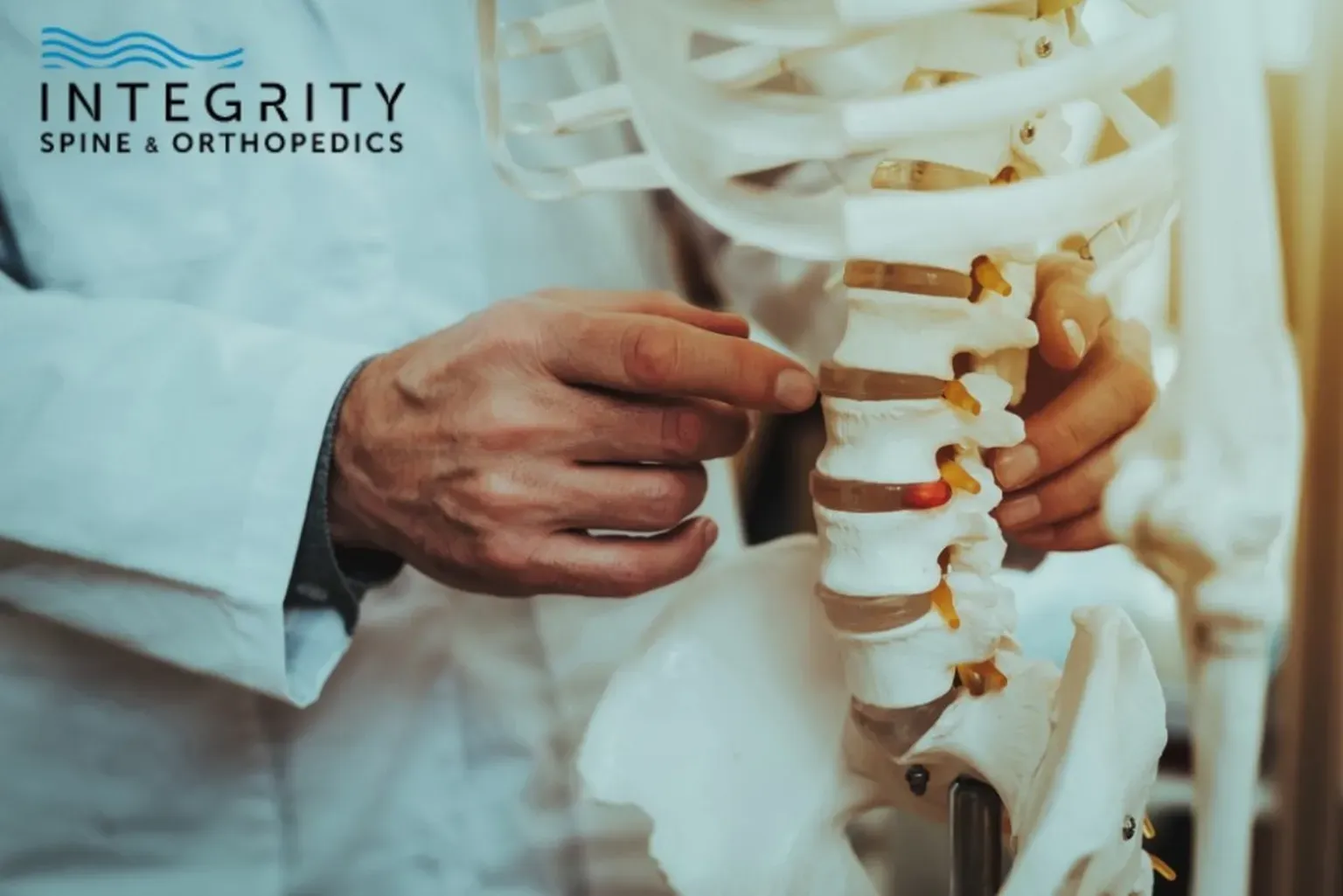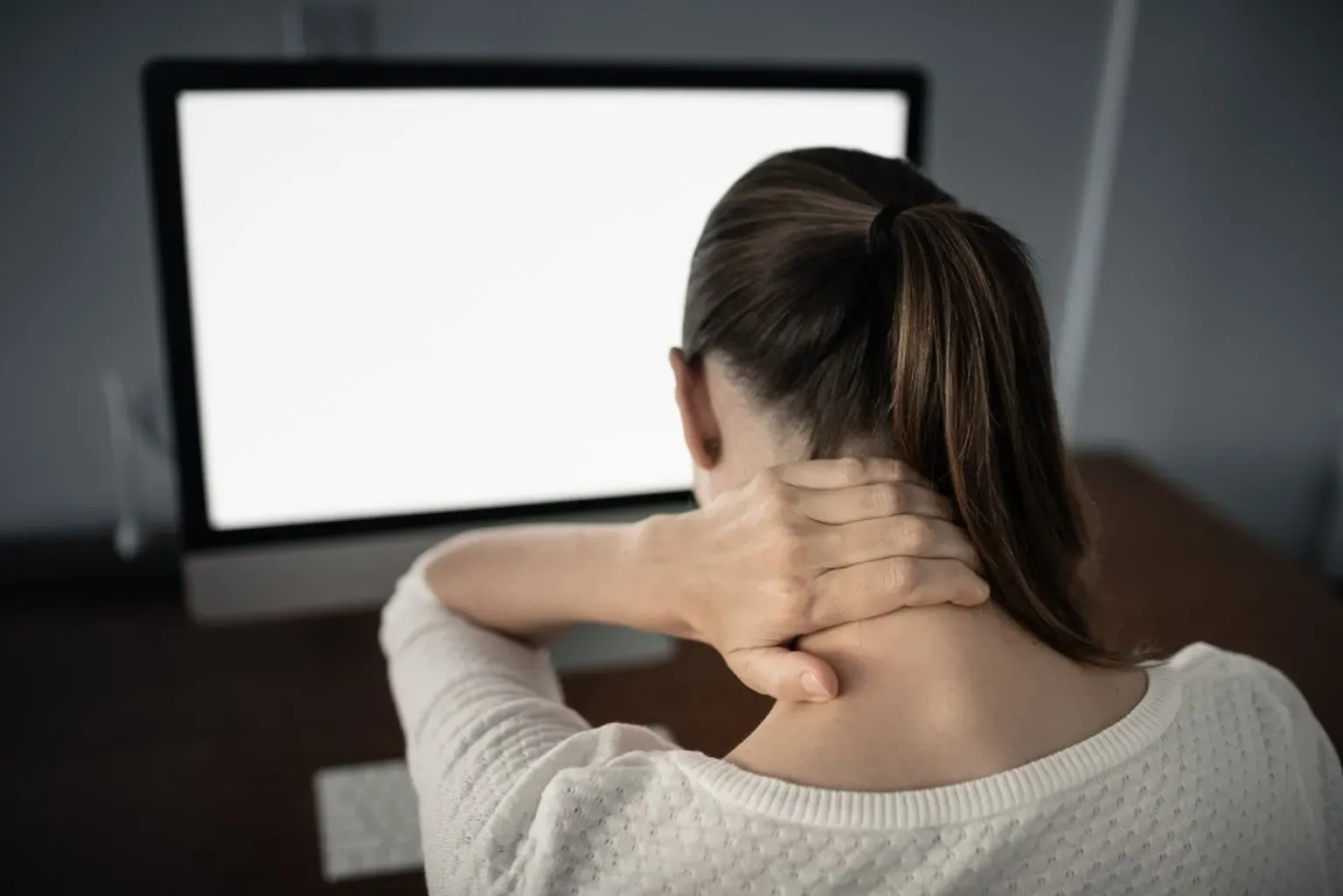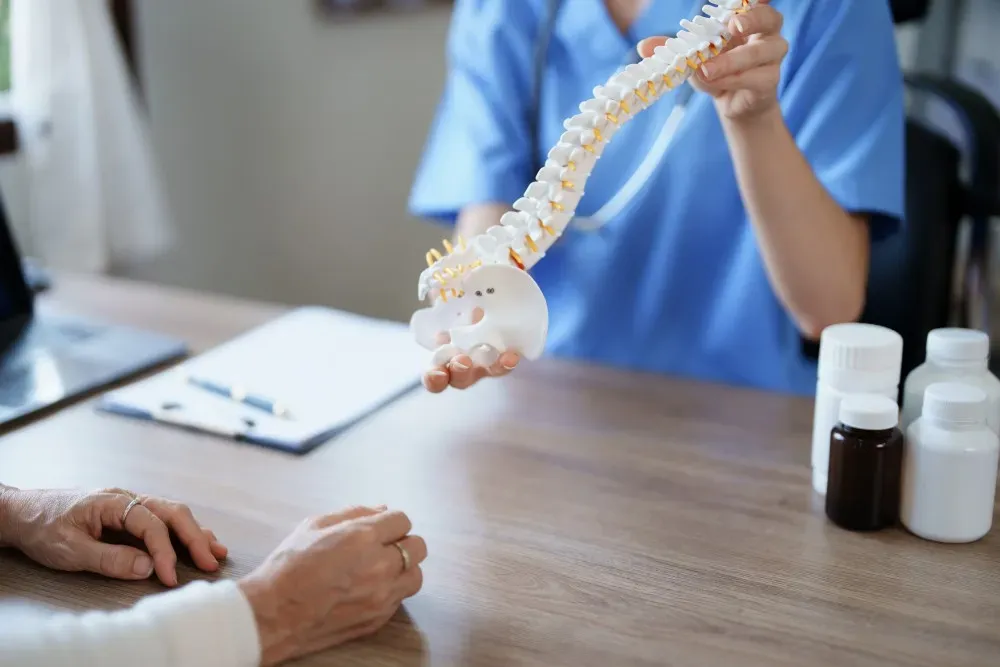Neurosurgery & Orthopedic Surgeons in Jacksonville

What is Disc Extrusion?
Disc extrusion is a specific type of spinal disc herniation. Although the term “herniated disc” is typically used to describe all herniation injuries, there are 3 types of disc herniation: protrusion, extrusion and sequestration.
WHAT IS DISC EXTRUSION?
Disc extrusion is a specific type of spinal disc herniation. Although the term “herniated disc” is typically used to describe all herniation injuries, there are 3 types of disc herniation: protrusion, extrusion and sequestration.
Let’s back up a little: what is disc herniation? Spinal discs sit between the 33 vertebrae in the spine. They provide cushioning, protection and shock absorption for the vertebrae and they help facilitate spinal mobility. Discs are made up of 2 components: a tough, fibrous outer layer (the annulus fibrosus) and a soft, jelly-like inner core (the nucleus pulposus).
When we’re young, our spinal discs are strong and flexible. But with age, they begin to dehydrate, stiffen and become more vulnerable to injury and damage. Disc herniation occurs when the inner core material begins to bulge or leak out from the fibrous outer layer. Age, natural wear and tear, traumatic incidents like a fall or car accident, overuse injuries, obesity and genetics can all cause disc herniation.
3 TYPES OF HERNIATED DISCS
There are 3 primary types of disc herniation, classified by the condition of the annulus fibrosus and the nucleus pulposus:
- Disc protrusion. The jelly-like inner core bulges from the disc, but the fibrous outer layer of the disc remains intact.
- Disc extrusion. The jelly-like inner core breaks through the fibrous outer layer and leaks out into the spinal canal. The inner core material remains attached to the disc. This type of herniation may start as a disc protrusion and progress to a disc extrusion.
- Disc sequestration. The jelly-like inner core breaks through the fibrous outer layer and completely separates from the disc. It may float around and land somewhere in the spinal canal or in one of passageways leading out of the spinal canal. This type of herniation may start as a disc extrusion and progress to a disc sequestration.
All of the disc herniations listed above can cause pain, inflammation and symptoms if the inner core material or outer disc compresses spinal nerves, the spinal cord or other structures in the spine. And, as stated above, symptoms may develop or worsen if disc damage progresses and herniation becomes more severe.
While disc herniation can occur anywhere in the spine, it most commonly develops in the cervical spine and lumbar spine. The low back and neck bear the most weight and they’re the most mobile regions of the spine.
SYMPTOMS
In some cases, disc extrusion doesn’t cause any symptoms or pain. Symptoms appear if the jelly-like disc nucleus that leaks from the disc compresses nearby spinal nerves or spinal cord. If you have a symptomatic case, you may experience the following:
- Cervical spine
-
-
- Neck pain
- Pain that extends down the shoulder and arm
- Weakness, numbness or tingling that radiates down the arm and fingers
- Neck spasms
-
- Lumbar spine
-
- Low back pain
- Pain that extends down the buttock, thigh and leg (sciatic pain)
- Weakness, numbness or tingling that radiates down the leg and foot
- Back spasms
Typically, symptoms only occur on one side of the body.
TREATMENT OPTIONS
Your doctor will use an imaging scan like an MRI to visualize a herniated disc and determine the severity and type of herniation. Many extruded discs heal by themselves over the course of several weeks or months. Your doctor will probably recommend conservative treatments to aid the healing process. Treatment options may include:
1.) Medications. Over-the-counter medications can provide pain relief for mild to moderate pain. If you’re experiencing severe pain, your doctor may prescribe stronger pain relievers. If you’re having painful muscle spasms, your doctor may prescribe a short-term course of muscle relaxants.
2.) Cortisone injections. A corticosteroid injection directly into the damaged area reduces irritation and inflammation around compressed nerve roots. The effects of a cortisone shot are temporary, but it provides short-term pain relief and allows your body to start the healing process.
3.)Physical therapy. Your doctor may recommend a course of physical therapy to help you regain lost mobility and improve strength in your spine and surrounding muscles. A therapist will work with you to build up strength in your low back and core muscles, which protect and support your spine.
4.) Lifestyle changes. Your doctor may recommend you make a few lifestyle changes like exercising regularly and losing excess weight. Exercising regularly can help you build and maintain strength, flexibility and mobile functionality in your muscles and joints. Losing excess weight takes stress and pressure off your spine and joints.
If you have significant disc damage or pain that’s affecting your ability to do everyday activities, surgery is an option for you. At Integrity Spine and Orthopedics, we perform minimally invasive spinal surgeries to repair or replace damaged spinal discs. Minimally invasive procedures have fewer risks than open surgeries and they require less recovery and rehabilitation post-op. Many of our patients are able to resume their normal activities within a few weeks of surgery.
INTEGRITY SPINE AND ORTHOPEDICS TREATS SPINE AND JOINT CONDITIONS
Integrity Spine and Orthopedics specializes in performing minimally invasive spinal procedures for a range of spine conditions, including herniated discs. We also offer pain management and general orthopedic services to help you manage acute or chronic back and joint pain.
Please call us at 904-456-0017 to request an appointment to see one of our board-certified orthopedic doctors in our Jacksonville, FL, clinic location. We also offer free MRI reviews to qualified patients — contact us today for more information.




